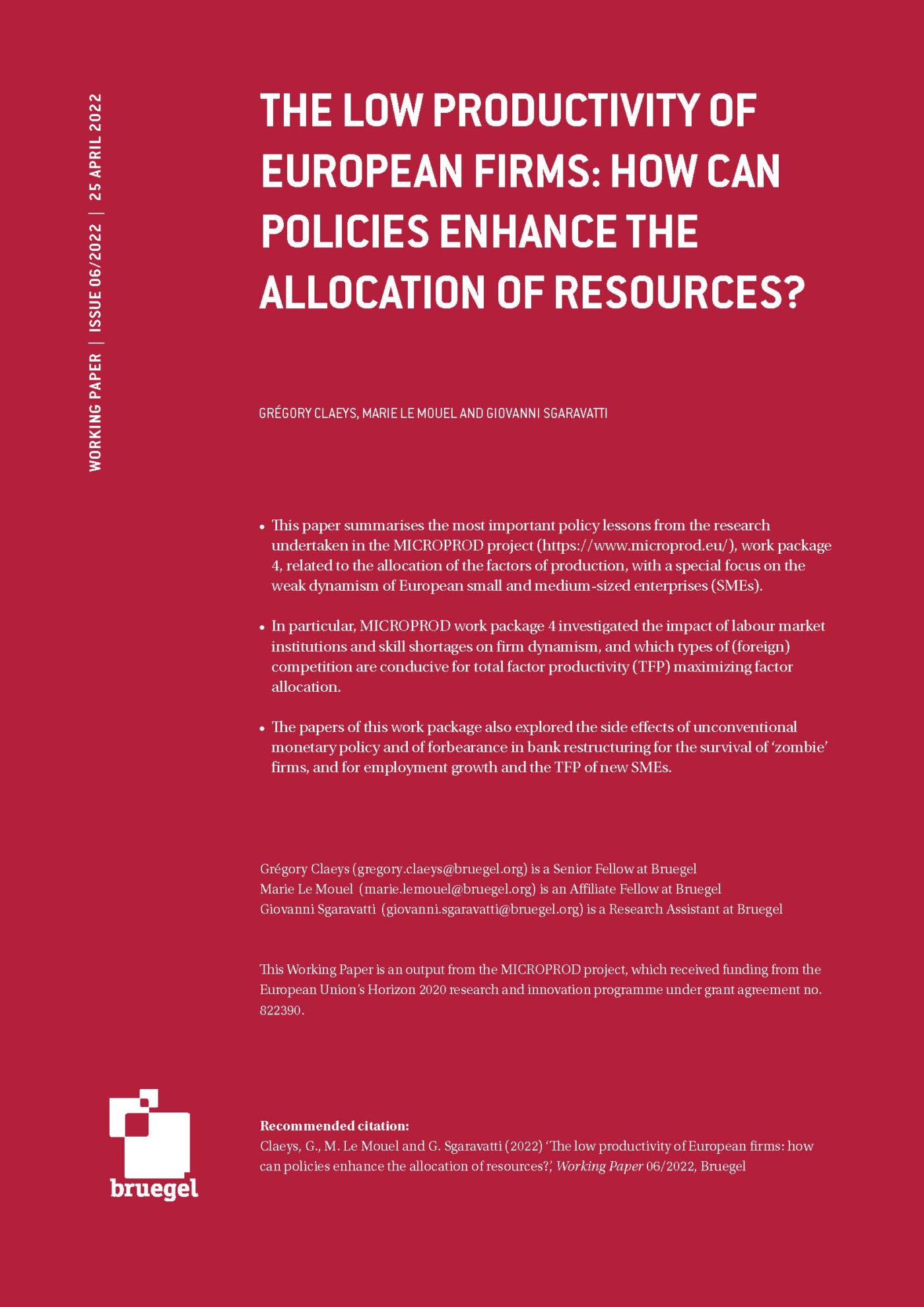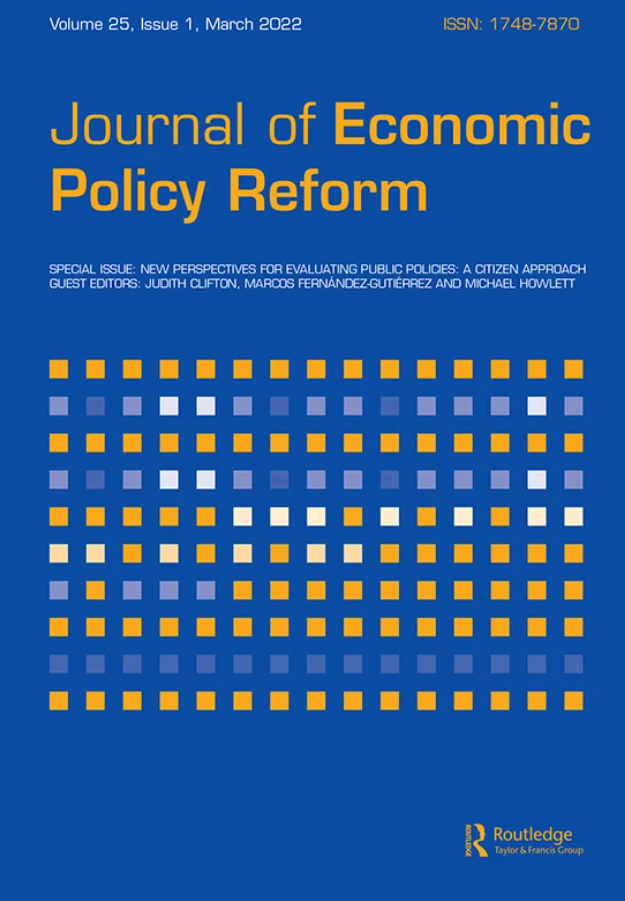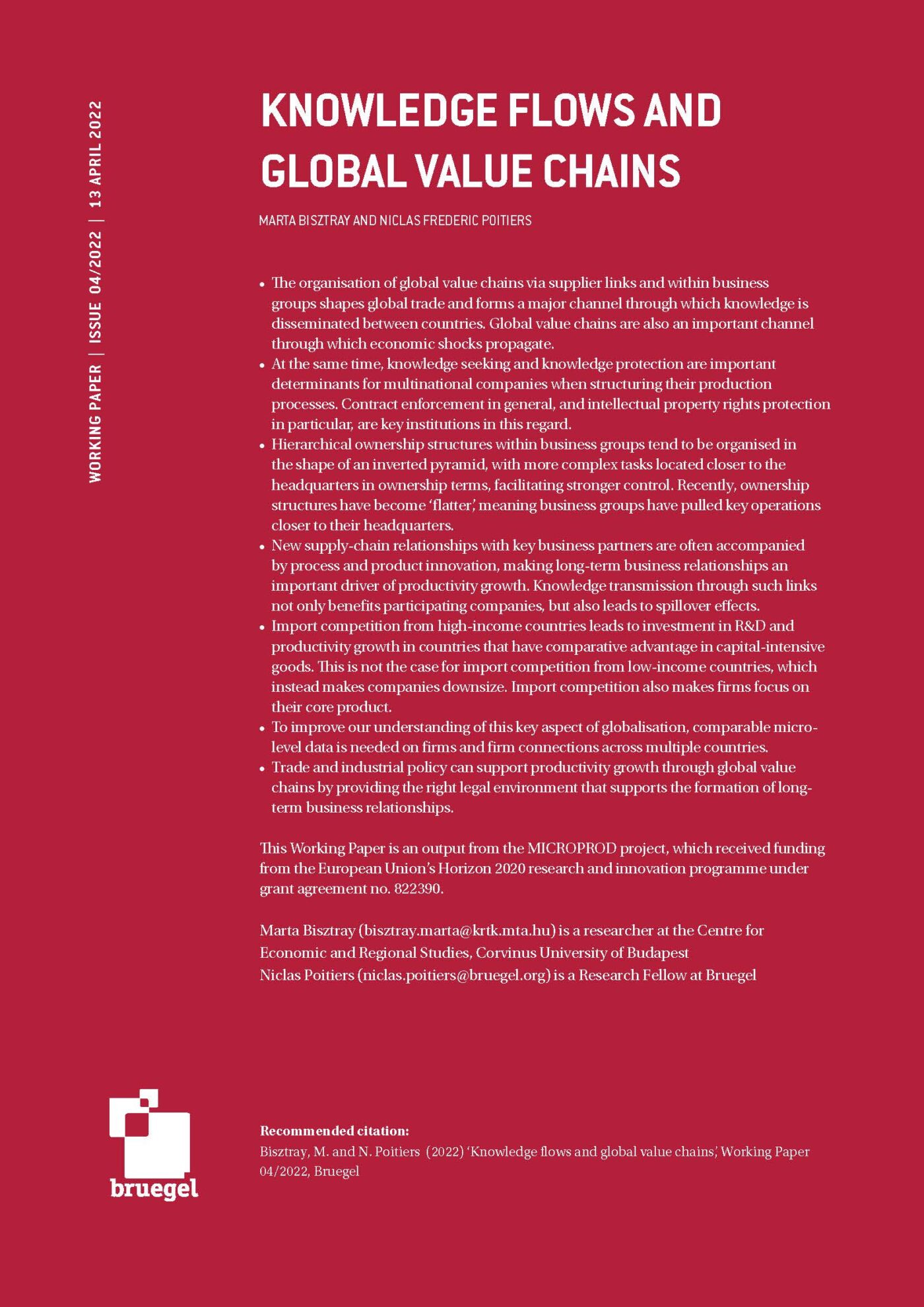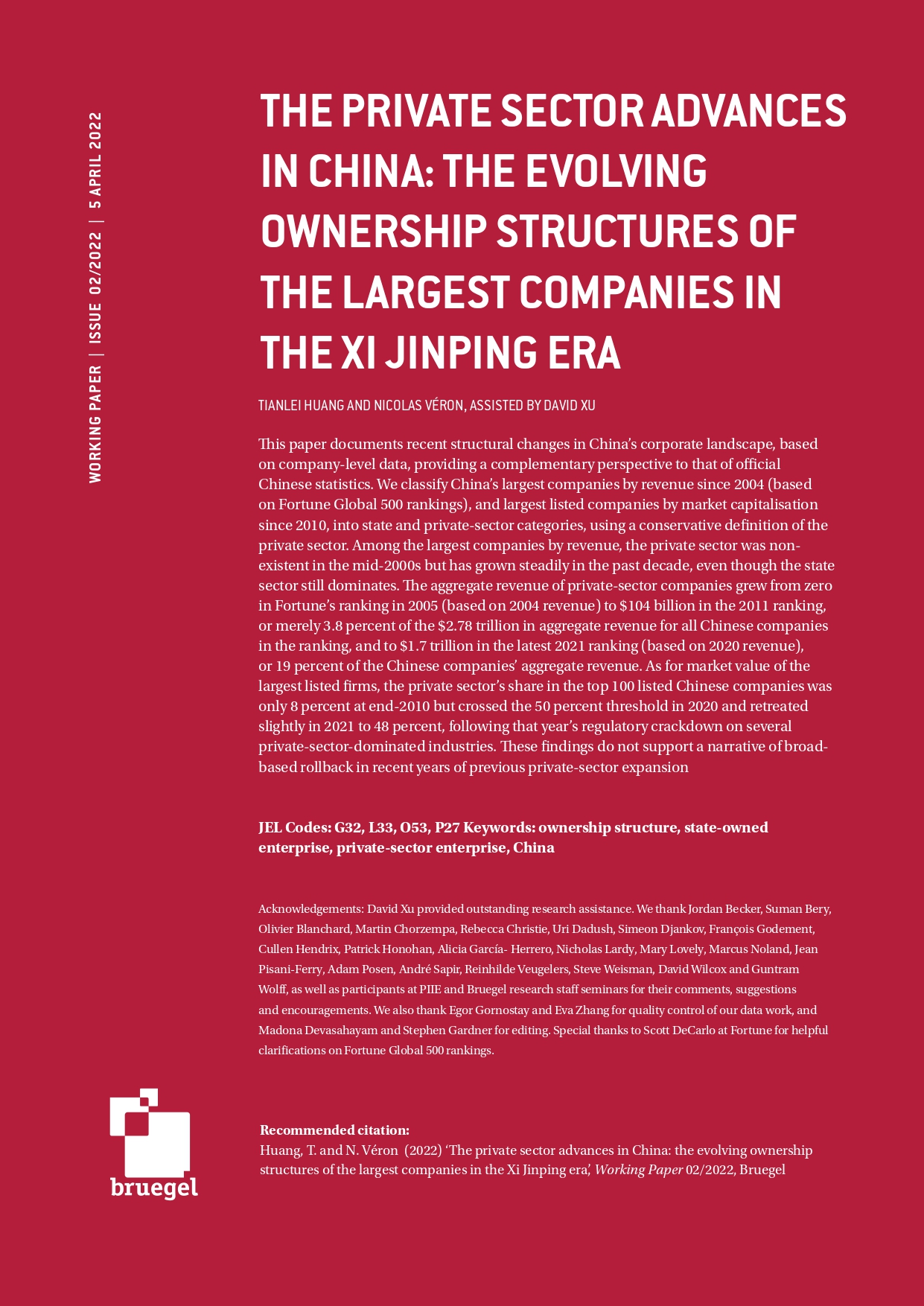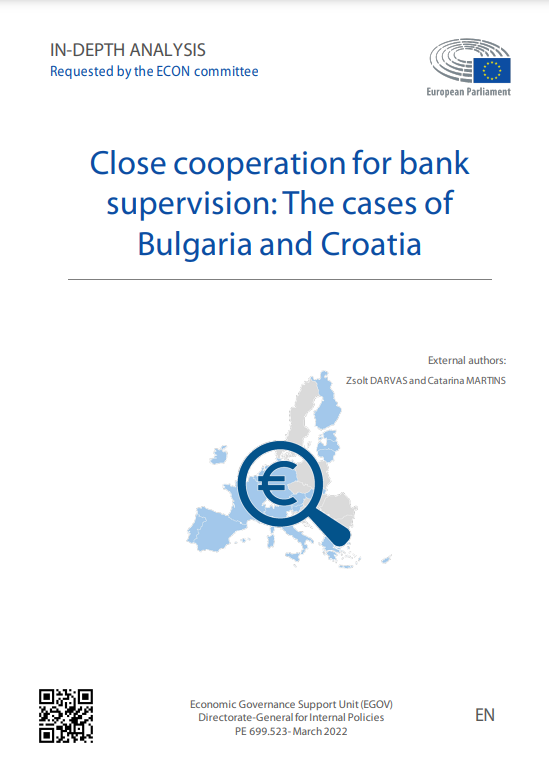Blog Post
SPACs in the gap
Special-purpose acquisition vehicles could fill a gap in European equity markets and lure risk-averse investors off the sidelines.
European equity markets lag behind their American counterparts and draw relatively limited interest from insurance companies and pension funds. Getting this capital off the sidelines and into growing companies is one of the main goals of the European Union’s capital markets union project. To move forward, the EU will need to consider innovating, not just expanding, its equity offerings.
Special purpose acquisition companies, or SPACs, might be part of the solution. These companies are publicly traded pools of cash that seek to merge with a promising non-public company within a set timeframe. The system works like this: A sponsor or group of sponsors, often a brand-name fund manager, takes this ‘cash box’ public with a promise to find a company to merge with, within two years. The sponsor keeps a 20% stake. Investors buy shares in this cash box that come with warrants for future shares. Then the pool of money merges with an existing company, likely as a minority shareholder, and that merged company takes over the SPAC’s spot on the stock exchange and continues to trade. Often the enterprise gets at least one more round of funding known as a private infusion of public equity (PIPE) around the time the merger takes place.
For growing, non-public companies these vehicles offer an alternative to pursuing an initial public offering (IPO), which can be complicated and costly, or working with private-equity investors who may demand substantial control in exchange for a cash infusion. Because the SPACs have to find a company to merge with or refund all of the initial investments, the target firms may find they can get a more attractive deal than via other routes. Founders also may be more comfortable with the size of the stake they have to give up in the merger. This potential to help companies find funding that will help them scale up is a big reason to consider a growing role for SPACs in EU market offerings.
New in Europe
SPACs are fairly new to European markets, in contrast to their recent rise in the surging US equity environment. In the US, they are viewed as expensive, lightly regulated, and currently deeply trendy – the focus of extensive international media coverage and renewed scrutiny from the US Securities and Exchange Commission. Critics have painted them as poor bets. However, the same lottery-ticket characteristics that justify those criticisms also show the potential for SPACs to draw new money into the markets and to provide a new path for growing companies seeking funding. In Europe, where bank loans make up the lion’s share of corporate financing, that makes these vehicles worth a look.
European policymakers therefore should look for ways to support the industry and channel its energies constructively. By adding investor protections and focusing on ways to align longer-term incentives of founders, investors and start-up firms, the EU may be able to channel SPACs’ strengths while limiting their weaknesses.
Not cheap
The SPAC process is not cheap. The SPAC process tends to leech value out of the company, while enriching sponsors and some of the early shareholders. In a November 2020 study of 47 US. SPACs that completed mergers between January 2019 and June 2020, SPAC shares worth $10 at initial sale held only $6.67 of value at the median by the time the merger took place. In an April update, the median value fell to $6.40. The mean was $5.10, meaning that almost half the value of the initial share was diluted because of distributions to the sponsor, the warrant holders and underwriting costs. Share prices also usually fell after the merger. Shareholders thus bear the brunt of the costs and the dilutive effects.
There does seem to be a difference between ‘high-quality’ sponsors, who are former senior executives at Fortune 500 companies or are themselves a fund with $1 billion under management, and other sponsors, according to the research. Yet the better performance of the quality sponsors is driven primarily by extreme winners, so the median performance is still bad. To get a sense of how uneven the returns are, consider the case of billionaire SPAC investor Chamath Palihapitiya. According the New Yorker, “if an everyday investor had bought one share of stock in each of his SPACs on the first day the stock traded, three of those investments would have lost money. The entire bundle would today be worth thirty-one per cent more than the investor had initially paid. A comparable investment in the S&P 500 over the same period would have returned similar profits, but would have involved much less volatility and risk.”
SPAC sponsors – and importantly, SPAC target companies – do not face the same risks. The sponsors themselves tend to do well regardless. Meanwhile the target companies often can negotiate for more cash and to remain in majority control of the post-merger company. The study of 47 US SPACs found that on average, 70% of the merged company stayed with the target, leaving the combined SPAC holders with about 30% of the new entity. Because the SPAC usually has to liquidate if it cannot find a merger partner on time, the target companies may able to ask a higher price in a crowded market.
At a crossroads
Post-Brexit, the EU is at a crossroads in terms of what it wants its markets to look like. Historically, investors on the continent have been loath to take risks in their investments, and regulations shield them further. But the global financial crisis and subsequent pandemic recession have changed the scene. Bank deposits and sovereign bond investments yield little or nothing, or sometimes lose money because of negative interest rates. Meanwhile long-term capital is sitting on the sidelines. EIOPA, the EU insurance regulator, in December recommended loosening the framework for allowing insurers to invest in equity and long-term illiquid assets, and similar efforts are underway in the EU’s next round of capital markets union planning. Now the challenge will be to convince investors that because they can invest in equity, they might actually want to.
Why would investors want to invest in a company when they don’t know what it is going to do? First, these vehicles might represent a bet or a diversification from investors looking for a new asset class or to increase their general equity market exposure. Second, the pre-merger investors get warrants that have often proved a way to lock in returns, although that is getting harder now that markets have learned how better to price them. Third, well-heeled investors may relish the chance to invest alongside high-profile money managers, regional or sectoral specialists, and even non-financial celebrities. That last may seem far-fetched, but in an era when investors also are flocking to volatile crypto-assets and non-fungible token digital art, SPACs would seem to offer at least as logical a proposition for return.
When considering the potential role of SPACs in European markets, it’s worth noting the differences with US markets. For one thing, SPACs in the EU are much less established: in the US, there were 248 SPAC IPOs in 2020, and 298 in the first quarter of 2021, according to market data presented at the ECGI event. In Europe, the comparable numbers were 4 and 7, and the vehicles themselves tend to be smaller. In the US, SPACs can reach up to $1 billion in size. In the EU, funds are generally in the $300 million to $500 million range, and there can be restrictions on selling and redeeming. For example, in some jurisdictions investors cannot redeem their shares unless they reject the proposed business combination. The UK, a popular locale for SPAC listings, has additional barriers such as a requirement that share trading be suspended when mergers are announced, which limits how investors can sell or redeem their holdings. A review of the SPAC rules was included in the March 2021 UK Listings Review chaired by former EU financial services commissioner Jonathan Hill.
Fragmented rules
There is no EU regime for SPACs, which instead are subject to a melange of national rules, tax considerations and listing rules. SPAC IPO listings in Europe have primarily been in the UK, the Netherlands, Italy and Sweden. Factors in deciding where to list include regulation, company law flexibility, taxes, governance, the likely country of the SPAC’s target and the degree of investor familiarity with the process. The companies are more likely to be incorporated in tax-friendly jurisdictions like the British Virgin Islands, Luxembourg or the Netherlands, as well as in the UK and Italy. Requirements for specifying a target industry sector vary, as do prospectus rules, although the general feeling is that SPACs are not subject to the Alternative Investment Fund Managers Directive (2011/61/EU). The law firm found that it is possible to get pretty close to the US structures, although the presence of negative yields on cash holdings means that either investors or sponsors need to provide extra capital to keep the funding pool stable.
Another transatlantic difference is the prevalence and desirability of going public, either through an IPO or a direct listing. Where US commentators sometimes worry that the market for public offerings is becoming overheated, in Europe policy makers have emphasised the lack of market options for smaller companies, who also have a harder time getting bank loans than bigger firms. In 2020, the High Level Forum on Capital Markets Union found that small and medium-sized enterprises (SMEs) are particular wary of equity markets, noting in its top findings that “public listing is too burdensome and costly, especially for SMEs and the funding ecosystem for IPOs in the EU is underdeveloped”. Overall, EU listed companies have been getting larger and older, as the public corporation has declined in prominence. A 2020 study for the European Commission by the Oxera consulting firm found the number of listings in the pre-Brexit EU 28 had declined substantially over the previous decade. Meanwhile investors cite difficulty navigating prudential requirements and the maze of specialised investment vehicles meant to help smaller companies find funding.
Sponsors’ responsibilities
One way to make SPACs a sturdier part of the EU market would be to require SPAC sponsors to take on more skin in the game, over a longer-term horizon. For example, in April, the SPAC Pegasus Europe raised €500 million in its April IPO and is looking to merge with a growth-oriented company in the financial services industry, according to its public profile. A pre-listing announcement for Pegasus said the four co-sponsors would invest in a minimum of 10% of the initial offering and commit to enter into a substantial forward purchase agreement. This could be one model for aligning incentives of sponsors, investors and the target firm over time.
Because of the fragmented nature of European markets, the extra costs of joining forces with a fund sponsor might not seem so daunting, especially given the fees and hassle of other investment options. To be sure, there will be ongoing questions of corporate control, particularly if institutional investors want to take a more active oversight role, and the market will continue to favour professional investors with better information. However, expanding equity markets promises to boost the economy for governments, firms and households. The European Central Bank has further found that economies that have a funding structure more focused on equity than bank credit or other forms of debt have reduced their carbon footprints more than other countries in recent decades. SPACS can be one element of expanding EU options.
As regulators consider what to do with this format, the question should not be whether SPACs are the ideal way forward for European equity markets but rather whether the costs and risks of this vehicle are worth it if they can attract investment and growing companies that might otherwise not be in the markets at all.
Recommended citation:
Christie, R. (2021) ‘SPACs in the gap’, Bruegel Blog, 13 July
Republishing and referencing
Bruegel considers itself a public good and takes no institutional standpoint. Anyone is free to republish and/or quote this post without prior consent. Please provide a full reference, clearly stating Bruegel and the relevant author as the source, and include a prominent hyperlink to the original post.



